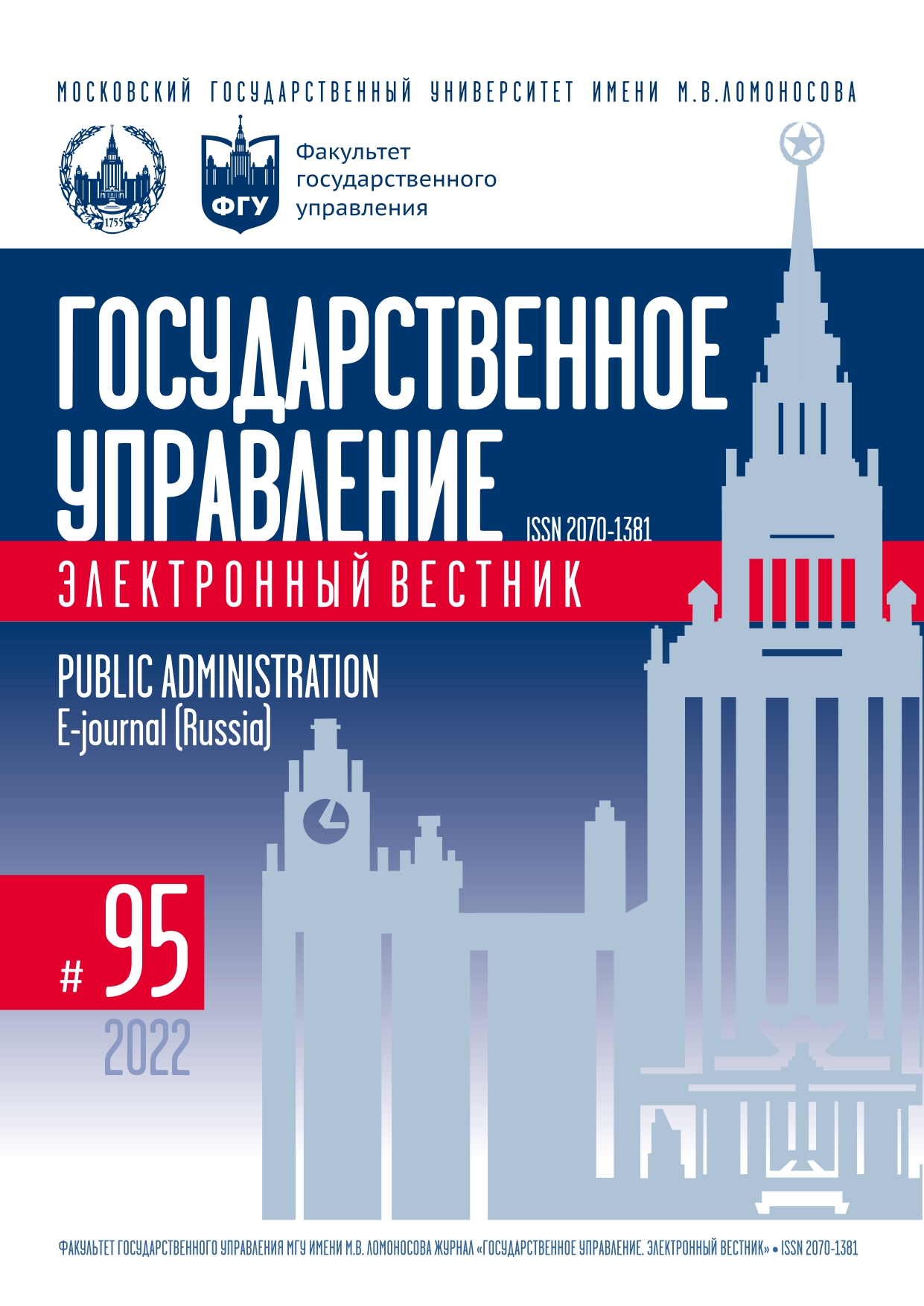Ensuring Access to Healthcare in Russia: Role of Public Policy Instruments
Keywords:
Healthcare system, human potential, public policy instruments, access to medical care, standards, healthcare financingAbstract
Ensuring the accessibility of healthcare system is formulated as one of the most important tasks of the state policy of Russia in the field of protecting the health of citizens and thus improving human potential. In this article, issues related to theoretical and practical aspects of access to medical care are considered from the point of view of public policy instruments that can be used to improve it. The analysis of methodological approaches to understanding and defining accessibility as a goal of public policy has been carried out. Discussion on the role of public policy instruments is focused on two aspects, namely standardization and health care financing covering both general issues and problems of Russian practice. The analysis of standardization in health care makes it possible to single out different types of standards, namely clinical, managerial-organizational, and behavioral. The article shows both the positive aspects of standardization in ensuring the availability of medical care as well as problems that arise when standards are used in healthcare. An important instrument of state policy that affects the access to medical care is the amount and direction of funding. The paper highlights the growth of personal “out of pocket” expenses of citizens as an important factor limiting accessibility, which in turn makes it important to increase public health financing, primarily as a share of GDP, and to improve the efficiency of using public funds allocated for health care. It is concluded that in order to increase the accessibility of healthcare for citizens in Russia, it is necessary to develop the system of standards, based on strengthening the behavioral component, as well as to ensure a high level of polling resources in healthcare first of all via increase in the amount of public funding.
References
Григорьева Н.С. Социальные стандарты качества жизни: к постановке вопроса // Стандарты и качество. 2022. № 7. С. 91–95. DOI: 10.35400/0038-9692-2022-7-134-22
Караева О.С. Реформа здравоохранения в оценках врачей и пациентов. Социологический анализ институциональных изменений 2012–2016 гг. // Вестник общественного мнения. Данные. Анализ. Дискуссии. 2016. № 3-4 (122). C. 93–108. DOI: 10.24411/2070-5107-2016-00018
Карпова О.Б., Загоруйченко А.А. Актуальные вопросы кадрового обеспечения в здравоохранении в России и в мире // Здравоохранение Российской Федерации. 2022. Т. 66. № 3. С. 181–187. DOI: 10.47470/0044-197X-2022-66-3-181-187
Кислицына О.А., Чубарова Т.В. Современное государство в смешанной экономике благосостояния (на примере здравоохранения). М.: Институт экономики РАН, 2018.
Найговзина Н.Б., Филатов В.Б., Бороздина О.А. История стандартизации в отечественном здравоохранении // ОРГЗДРАВ: новости, мнения, обучение. 2015. № 1. С. 71–88.
Панова Л.В. Доступность медицинской помощи: Россия в европейском контексте // Журнал исследований социальной политики. 2019. Т. 17. № 2. С. 177–190. DOI: 10.17323/727-0634-2019-17-2-177-190
Тихонова Н.К., Гаврилов С.Н., Дехнич С.Н., Каманин Е.И., Тихонов В.Г. Проблемы стандартизации здравоохранения: отношение врачей к стандартам и врачебные ошибки // Вестник Смоленской государственной медицинской академии. 2020. Т. 19. № 1. С. 245–249.
Чубарова Т.В. Экономика здравоохранения. Теоретические аспекты. М.: Институт экономики РАН, 2008.
Appleby J. How Much Should We Spend on Health Care? // The Surgeon: Journal of the Royal Colleges of Surgeons of Edinburgh and Ireland. 2015. Vol. 13. Is. 3. P. 121–126. DOI: 10.1016/j.surge.2014.11.004
Carrillo J.E., Carrillo V., Perez H.R., Salas-Lopez D., Natale-Pereira A., Byron A. Defining and Targeting Health Care Access Barriers // Journal of Health Care for the Poor and Underserved. 2011. Vol. 22. Is. 2. P. 562–575. DOI: 10.1353/hpu.2011.0037
Dahlgren G., Whitehead M. European Strategies for Tackling Social Inequities in Health: Levelling up Part 2. Copenhagen: WHO Regional Office for Europe, 2007.
Dzau V.J., Balatbat C. Strategy, Coordinated Implementation, and Sustainable Financing Needed for COVID-19 Innovations // Lancet. 2020. Vol. 396. Is. 10261. P. 1469–1471. DOI: 10.1016/S0140-6736(20)32289-3
Kelly Y, O›Rourke N, Flynn R, Hegarty J, O’Connor L. Definitions of Health and Social Care Standards Used Internationally: A Narrative Review // International Journal of Health Planning and Management. 2022. DOI: 10.1002/hpm.3573
Kriznik N.M., Lamé G., Dixon-Woods M. Challenges in Making Standardisation Work in Healthcare: Lessons from a Qualitative Interview Study of a Line-Labelling Policy in a UK Region // BMJ Open. 2019. Vol. 9. Is. 11. DOI: 10.1136/bmjopen-2019-031771
McIntyre D., Meheus F. Fiscal Space for Domestic Funding of Health and Other Social Services // Centre on Global Health Security Working Group Papers. 2014. Working Group on Financing. Paper 5. URL: https://www.chathamhouse.org/sites/default/files/home/chatham/public_html/sites/default/files/20140300DomesticFundingHealthMcIntyreMeheus.pdf
Sepetis A. Sustainable Finance in Sustainable Health Care System // Open Journal of Business and Management. 2020. Vol. 8 Is 1. P. 262–281. DOI: 10.4236/ojbm.2020.81016

